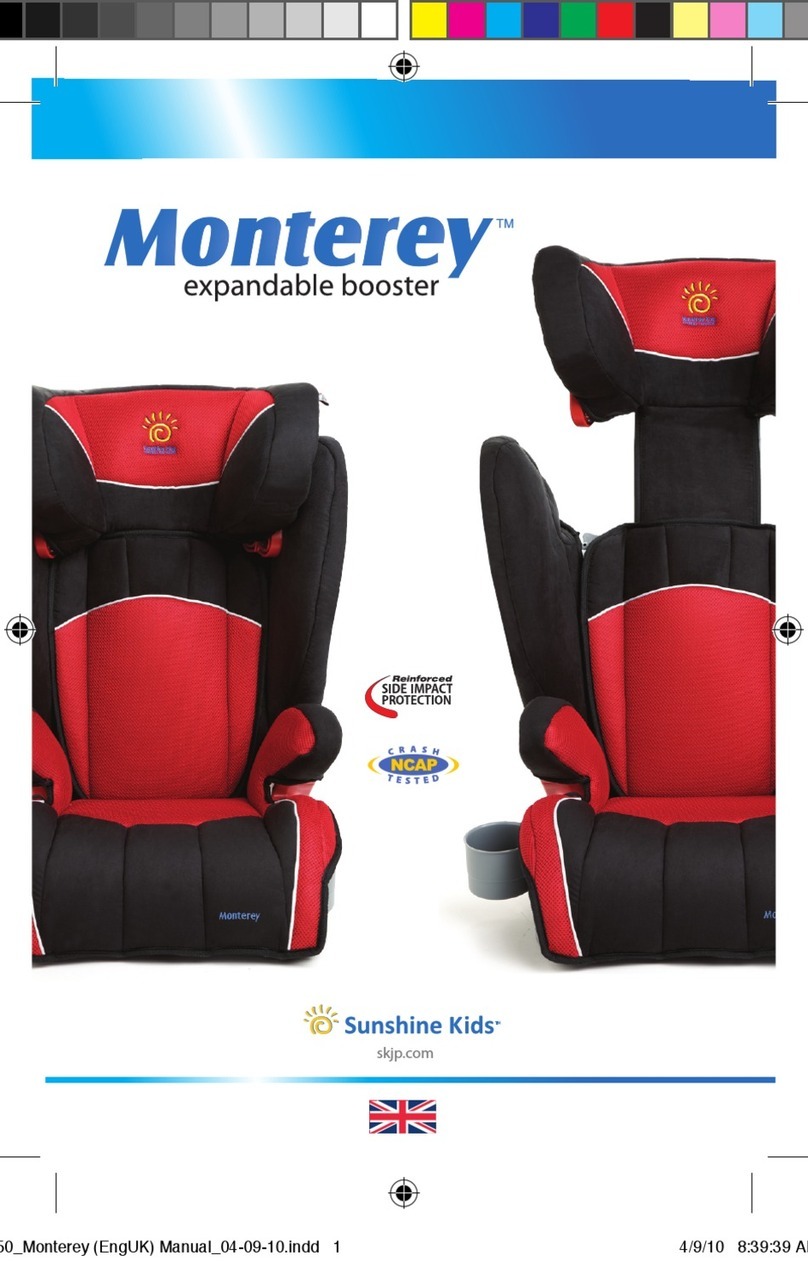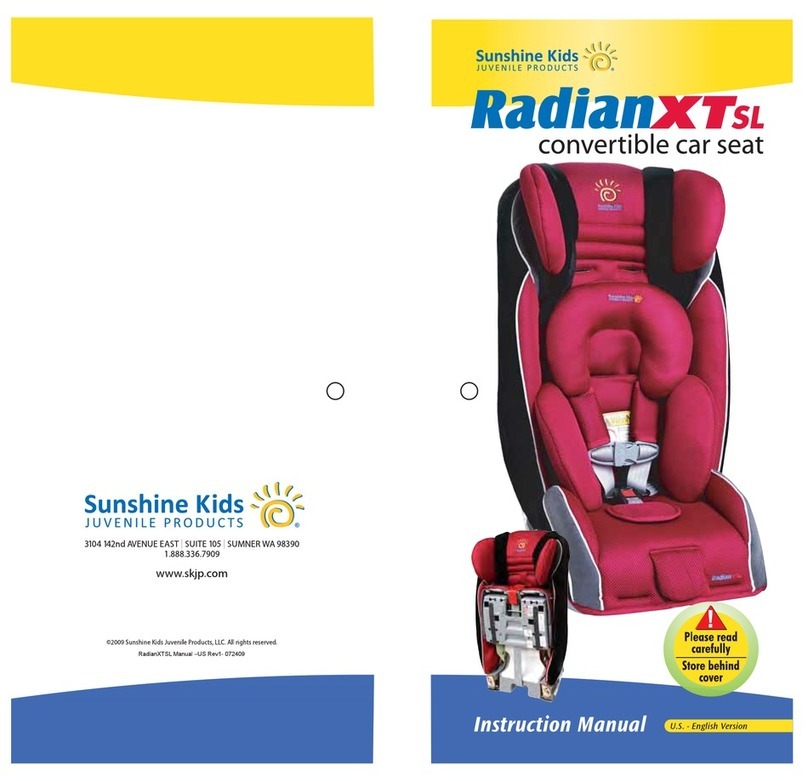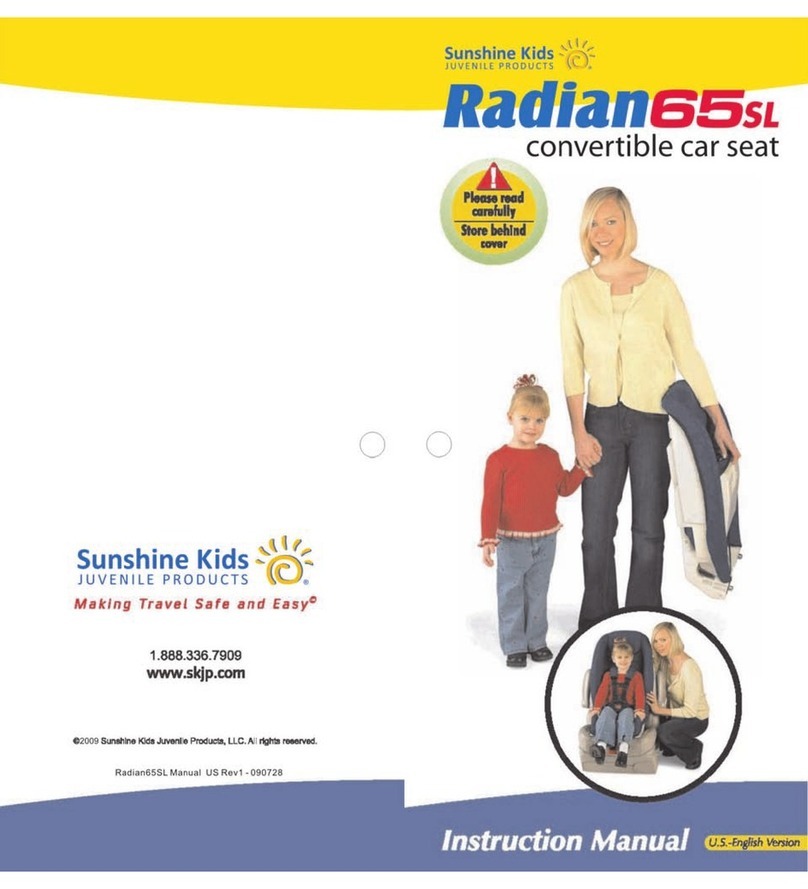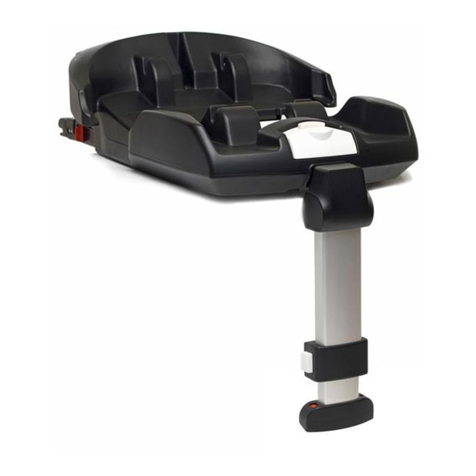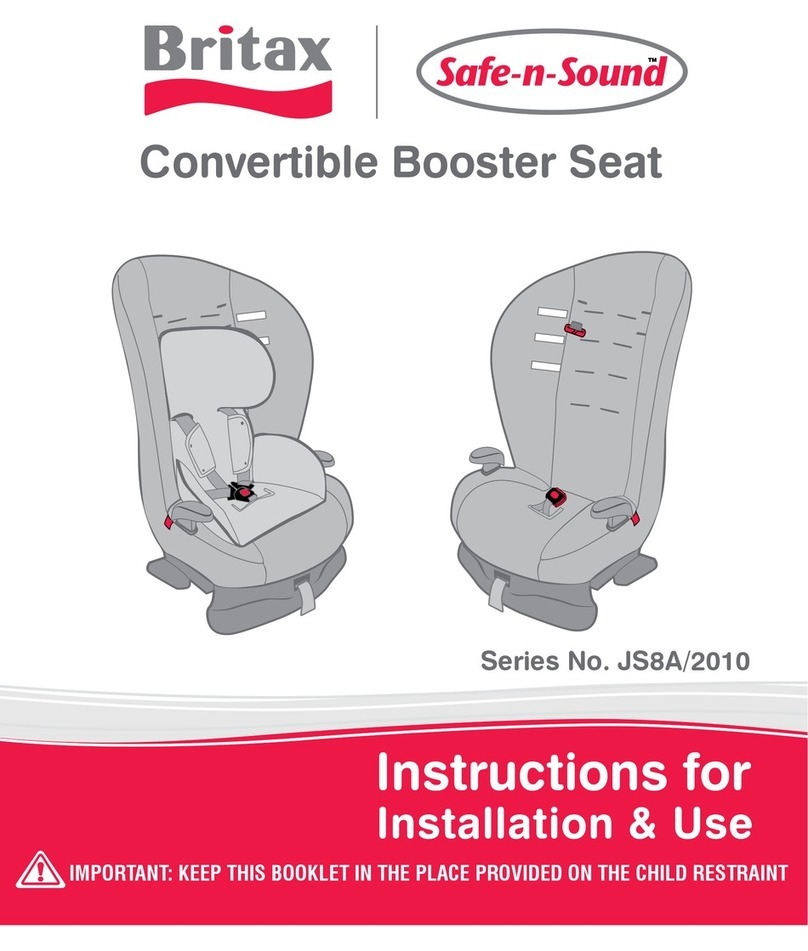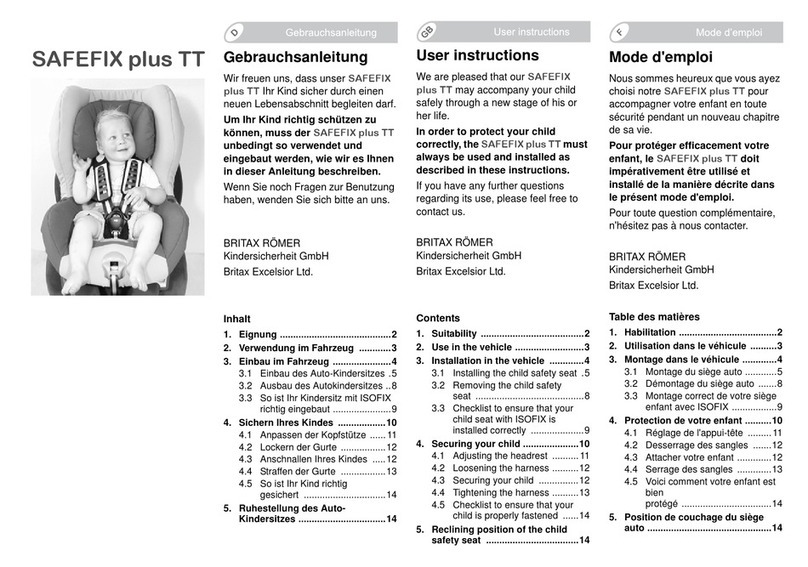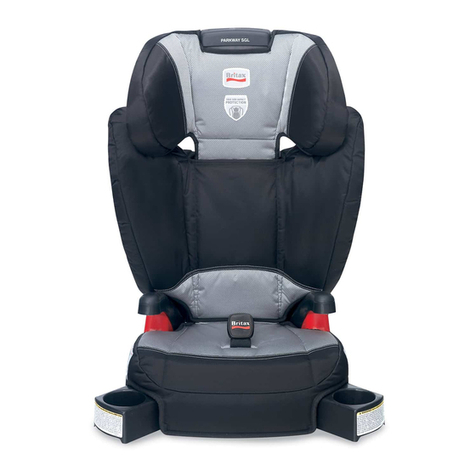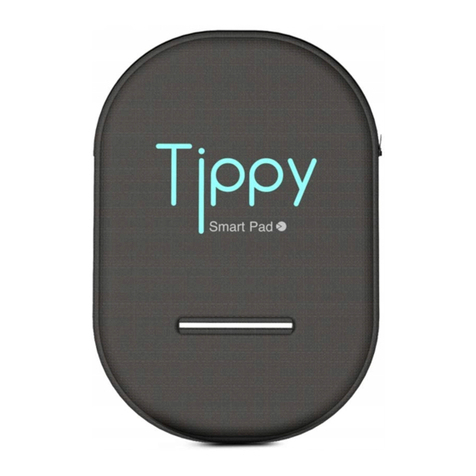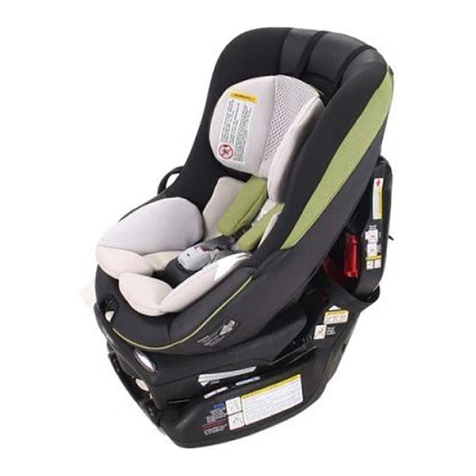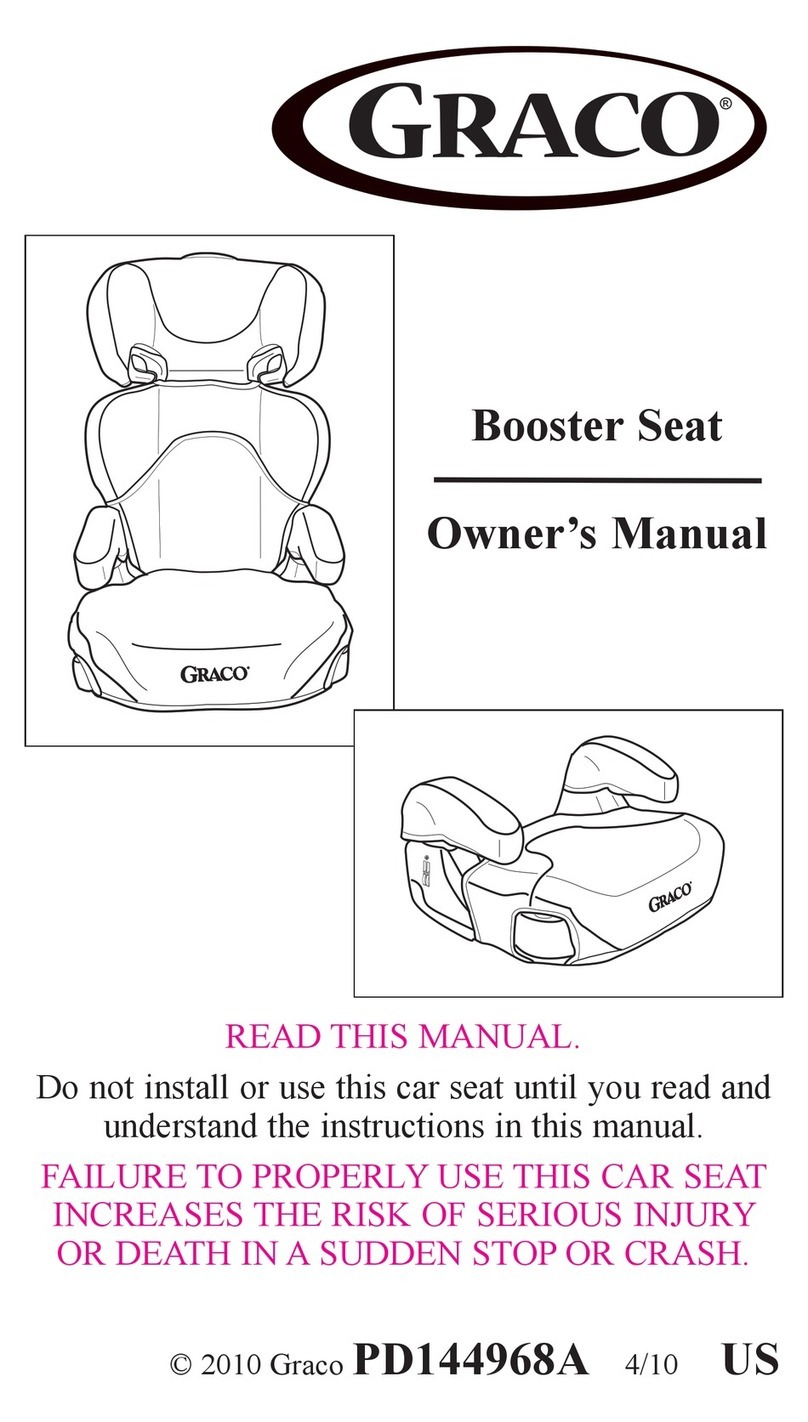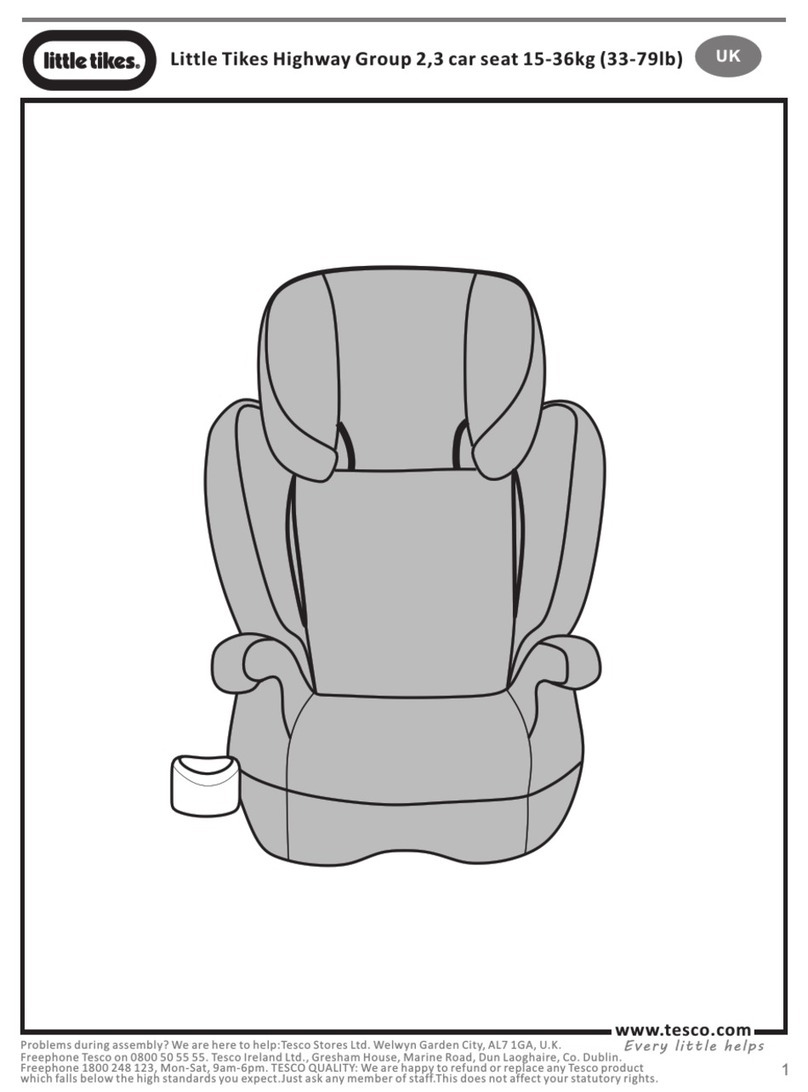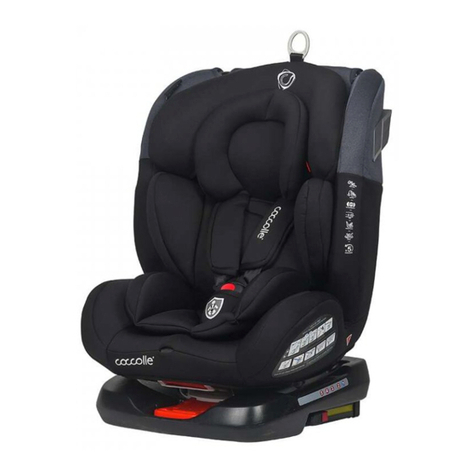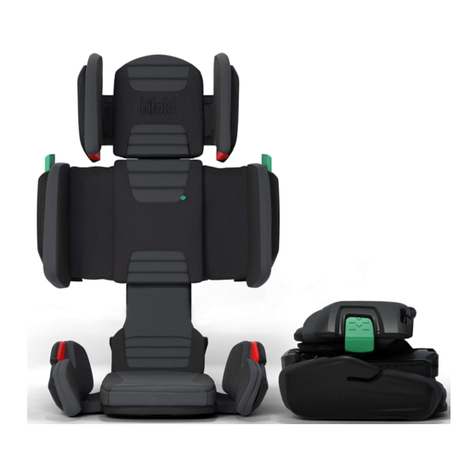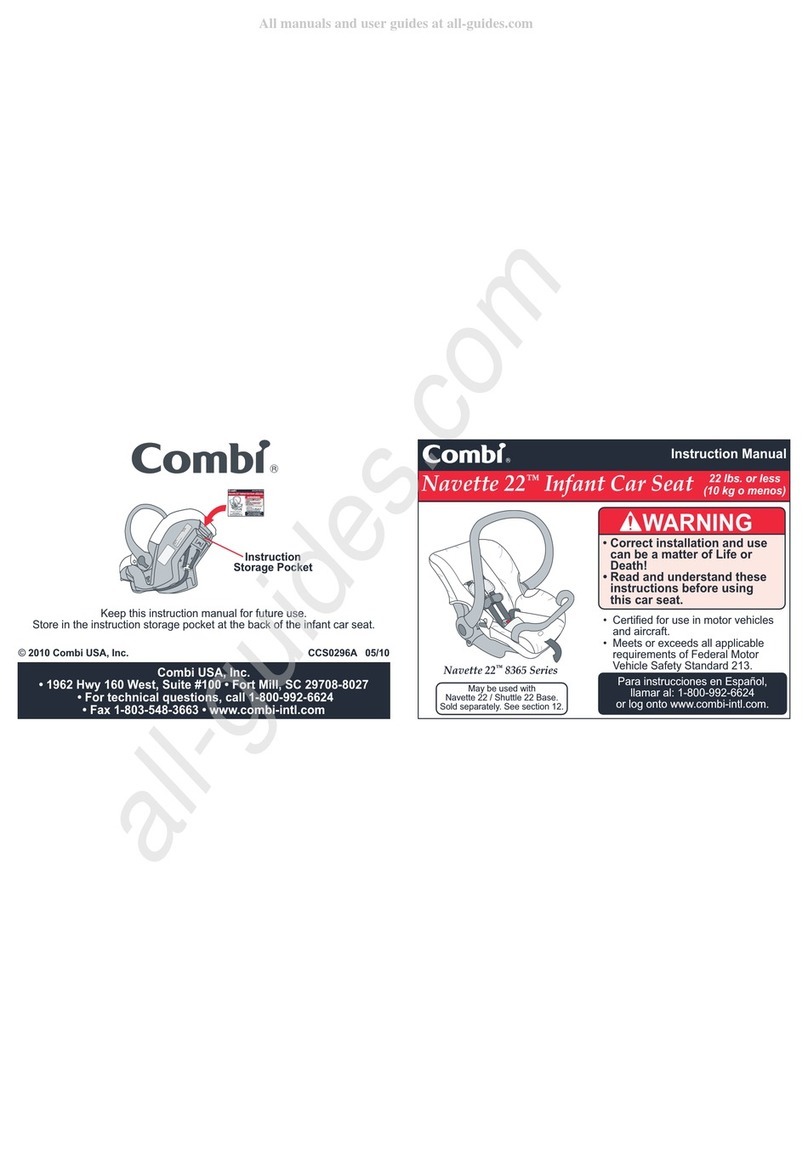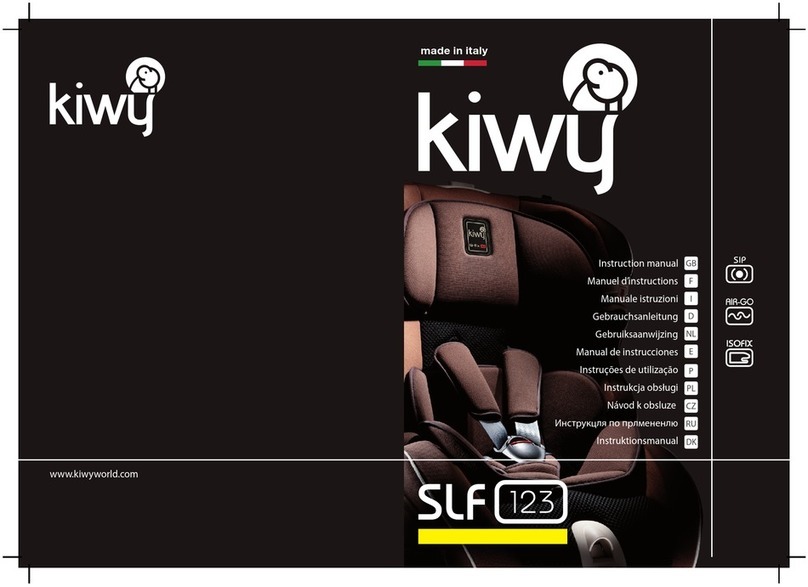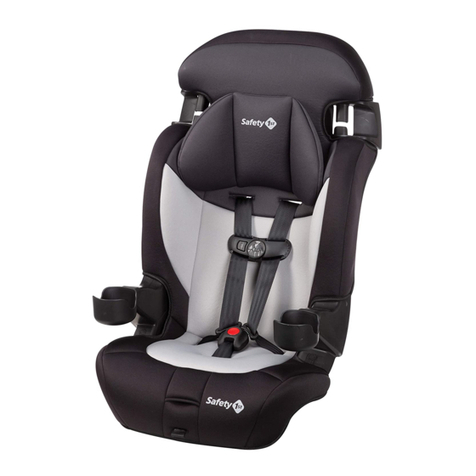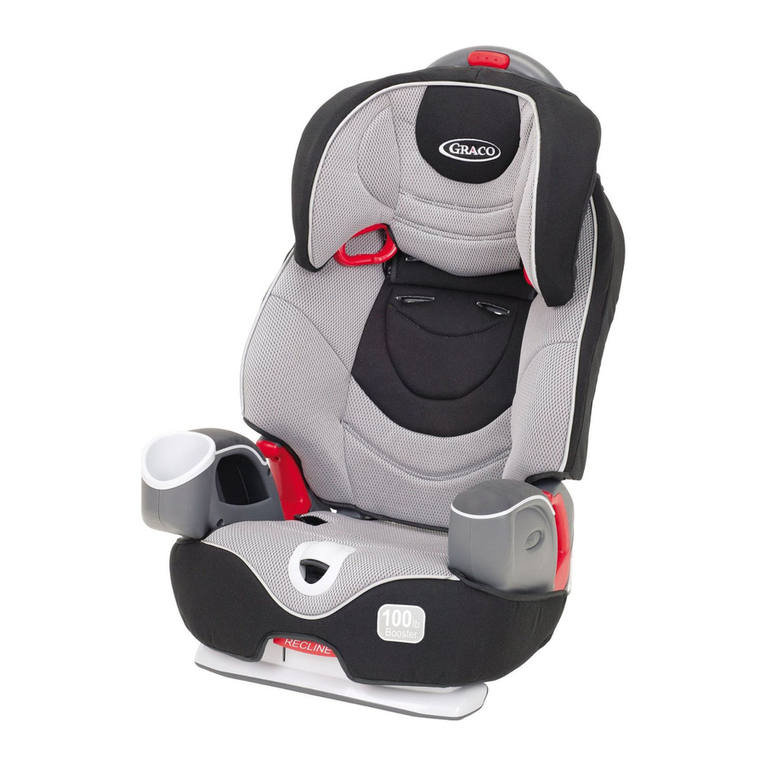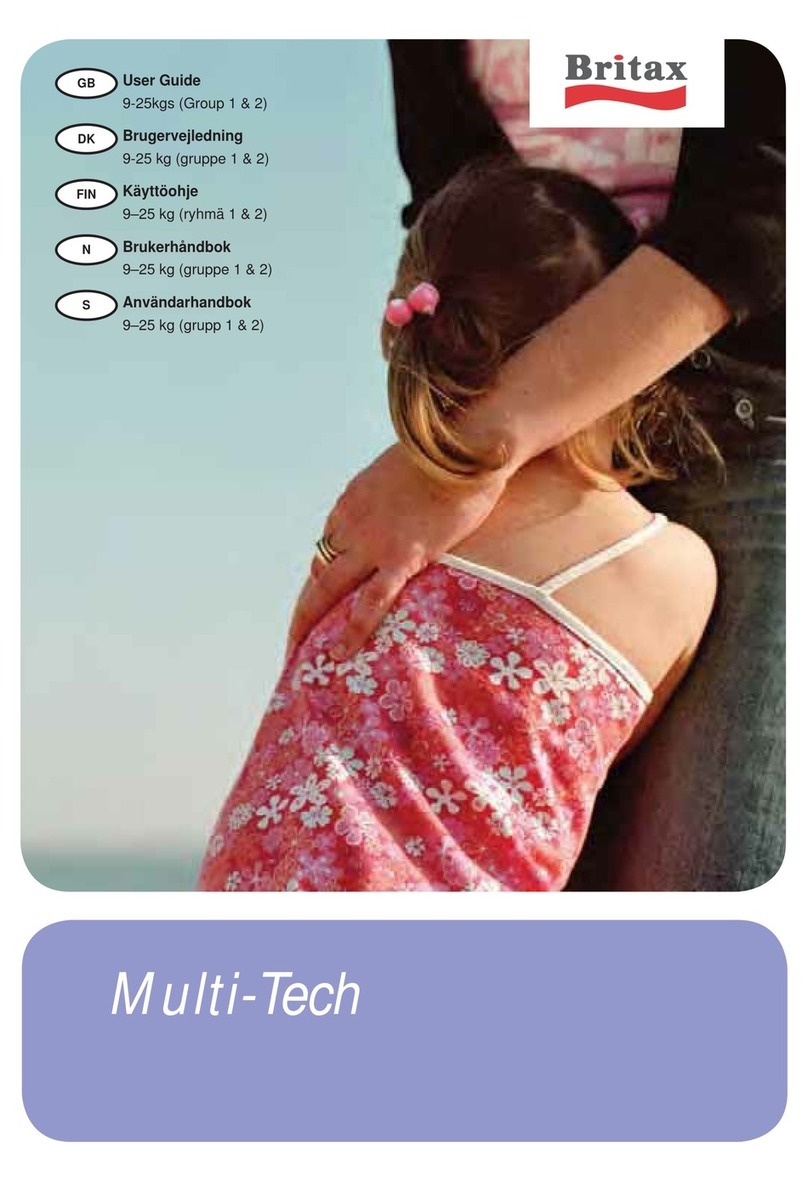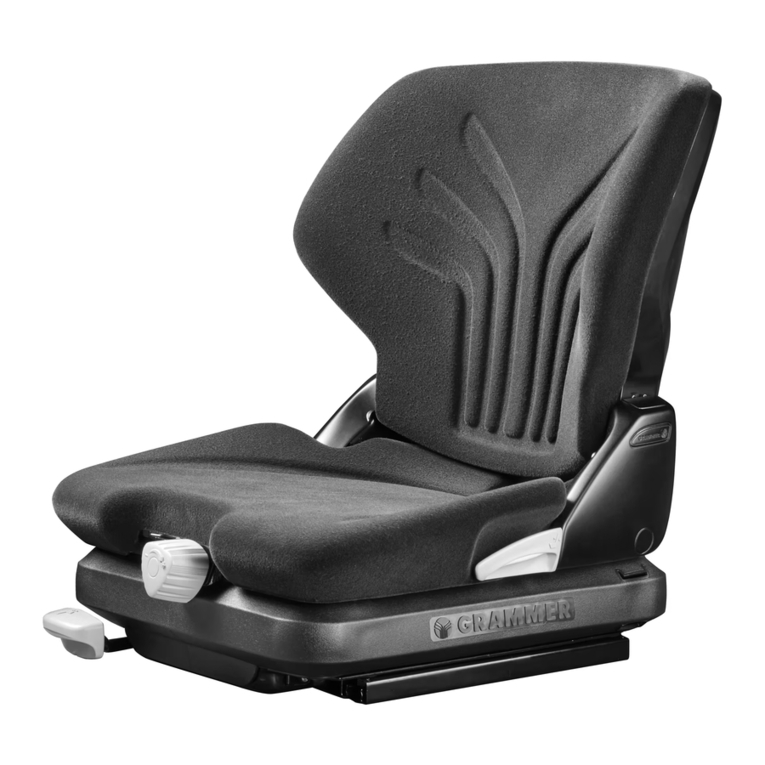
4
• Follow all instructions labeled on this child restraint and in the
written instruction manual on the lanyard located on back of
restraint. For infants under 4.5 kg (10 lbs), consult pediatrician
for recommended seat back angle before installation.
• Failure to follow all instructions and product labels can result in
death or serious injury in a crash. Carefully read and under-
stand this instruction manual prior to using restraint. If you
have any questions, visit www.skjp.com or contact Sunshine
Kids at 519-725-1700.
• Use only with children weighing between 5 lbs to 65 lbs (2.3 kg
to 30 kg) and who have a height of 53 inches (135 cm) or less.
• Use only in rear-facing position with any infant weighing less
than 22 lbs (10 kg) and 18–30 inches (46–76cm).
• For infants under 4.5 kg, consult pediatrician for recommended
seat back angle before installation.
• For children rear-facing: 5–45 lbs and 18–44 inches (2.3–20.5 kg
and 46–112 cm), forward-facing: 22–65 lbs and 30–53 inches
(10–30 kg and 76–135 cm).
• Only secure this child restraint with the vehicle’s lower
universal anchorage system (UAS) if available or with vehicle
seat belt.
• Do not use vehicle’s lower universal anchorage system when
installing this restraint for a child weighing more than 65 lbs
(30 kg).
• Always use the top tether strap when installing this restraint
forward-facing.
• Always use the SafeStop™ device according to manufacturer’s
instructions.
• Always use a locking clip if it is required for proper restraint
installation. Consult vehicle owner’s manual.
• WARNING: Before installing restraint in a vehicle equipped
with front passenger airbags, carefully read the vehicle owner’s
manual for proper restraint installation instructions.
• Some vehicles have passenger seating in which the passenger
faces the side or the rear of the vehicle. Do not install this
restraint in such passenger seating. Only use this restraint in a
vehicle seat which faces an adult passenger toward the front of
the vehicle.
WARNING
DEATH OR SERIOUS INJURY CAN OCCUR

